Yes, we know. General Motors went from an industrial juggernaut with the lion’s share of the US car market, to tragic depths that led to bankruptcy. Yes, GM made a multitude of arrogant, short-sighted decisions and put out some shamelessly bad cars. Yes, GM required major assistance from the government. Frankly, though, the GM hate needs to be leveled at its past decisions and products and people, because although the reformed company is still trying to keep its head above water in some respects (its struggling European operations, for example), this sedan proves definitively that GM is alive and kicking. And if anybody tries to tell you the 2015 Malibu is a poor choice for a mid-size sedan, they are woefully misinformed.
Automotive journalists like to dredge up horrible cars like the Chevy Vega and Cadillac Cimarron in their reviews of new GM product. With each passing year, it becomes less and less relevant, and more and more annoying. By the 1990s, the almost Greek-tragic GM was starting to turn a corner in terms of product. Still, if you look at a 20-year old review of a Chevrolet Corsica, you would come across an extensive list of critiques. Plasticky interiors, indifferent assembly quality and an aged design all afflicted Chevy’s 1995 mid-sizer. GM cars like the Corsica competed generally on price because they were certainly built to one, and they earned the ire of critics.
Heading into the 2000s, GM mid-sizers were generally solid efforts – G6, first Epsilon Malibu, Aura – let down by minor flaws. They often lacked just a bit of polish in terms of engine refinement and interior quality, but although they weren’t class-leaders, they were within spitting distance.
The 2008 Malibu really bought Chevy a seat at the table. There were modern four- and six-cylinder engines with up-to-date transmissions, as well as sharp styling and distinctive interiors. With such promise, perhaps critics were expecting another game-changer in the 2013 Malibu, or at least something to vault Chevy to the top of the class; instead, the current Malibu received criticism.
Blame a bungled launch, with Chevy initially launching it only in Eco trim, with a direct-injected 2.4 four with an additional 15-hp electric motor; its gearing and reduced trunk space were called into question. Shifting the Malibu to the short-wheelbase Epsilon platform (107.8 vs 112.3 in) was also a head-scratcher, considering the previous generation of Epsilons all had the longer wheelbase. Still, the 2013 addressed criticisms of the 2008, chiefly the erstwhile Malibu’s narrow width – growing 3 inches wider – and the lack of an infotainment screen. The smooth V6 was replaced with a punchy turbo four with 259 hp and 260 lb-ft (8 hp and 9 lb-ft more than the V6), echoing a trend in the segment towards boosted fours instead of V6s. For 2015, Chevy released a refreshed Malibu with a revised front fascia and various interior improvements; the unpopular Eco was dropped.
When it came time for my visit to California, I reserved a full-size, holding out hope for a Charger, but knowing full well that it was more likely to be a four-cylinder mid-size. In the past, a full-size reservation has netted me a base Passat, Altima and 200 (twice). None of those were bad, but having become accustomed to driving six-cylinder cars, it is sometimes a letdown to receive a four.
Scoping out the rental lot, the only cars close to full-size were brand new 2015 Chevrolet Malibus. The friendly Enterprise manager confirmed that one of these would be my car. Hopes of it being a turbo were quickly dashed, but it was at least an LTZ. I noticed an “Eco” badge on the trunk lid and was confused, thinking the Eco was a separate model.
It wasn’t quite fully loaded, lacking parking sensors and a reversing camera. While that disappointed me, I was quite pleased with the other features. Like many GM cars, it came with remote start. The interior was hugely impressive. The first thing one notices in a new Malibu is how the doors close with a solid thunk. Sitting in the heated, black leather seats, you notice a neat centre stack with a sizable 7-inch touch screen. The dash plastics are soft and pleasant to the touch, and the ambient lighting is classy. Switchgear is nicely damped.
I initially found GM’s new, unusual wood trim jarring when I saw it at the New York Auto Show, but it quickly grew on me and it suits the Malibu’s black interior. The center console has a handy storage bin with an AUX jack and USB port. The dash screen also flips out to reveal a storage cubby.
Let’s get to the flaws. The overall interior quality is of a high standard, but there were two chintzy trim pieces. The binnacle over the gauges has a stitched-leather look, but surprisingly is not of the same high quality as the rest of the dash. It feels extremely brittle.
Also, the overhead console with the map lights looks like it belongs in a different, cheaper car. The tinted rear-view mirror was an excellent feature, though, and significantly cut down on headlight glare.
The infotainment system, Chevrolet’s MyLink, is decently intuitive, with clear graphics and a large screen. Still, I prefer the interface of MyFordTouch and Chrysler’s uConnect, as they are easier to navigate between different functions. Sadly, this Malibu was not equipped with satellite navigation, although LTZ Malibus do have OnStar. We had a cable and an iPhone, though, and that was enough for us on our long road trip.
One of the chief criticisms of the current Malibu is the rear seat room, or lack thereof. For 2015, Chevrolet changed the shape of the front seatbacks to maximise leg room. Although I never rode in the back, I did sit in there once behind a driver’s seat adjusted for my height (5’11’’) and I had no complaints. It’s not the roomiest back seat, but it is acceptable if you’re not being chauffeured by a Harlem Globetrotter.
On the road, the Malibu impressed me. For a four-cylinder, it was decently powerful and not at all buzzy. The Malibu’s 2.5 four puts out 197 hp and 191 lb-ft, while returning 25/36 mpg. The cabin is silent, and the Malibu’s ride is excellent at blotting out road imperfections while still feeling planted. The automatic transmission shifts seamlessly; there is a manual mode, but I didn’t even bother using it. The one time I pressed it, it came up with a “Shift Denied” message, so I presume it’s one of the more restrictive manual modes that doesn’t let you rev to the redline before upshifting.
The steering was a little light, but it still had plenty of feel. The leather-wrapped wheel was a delight to hold, although the intersection of spoke and rim at the bottom made it difficult for me to hold the wheel at the six o’clock position (probably for the best, as one’s wrist would snap in a crash).
The aforementioned Eco badge indicated my Malibu was equipped with Stop/Start technology. It was barely perceptible, switching the engine off when the car was stopped but instantly bringing it to life when you pressed on the gas. It’s an excellent application of a handy efficiency feature, although unusually it didn’t always work and I couldn’t figure out why this was the case. Also, the remote start feature on the key fob should have worked far more often than it actually did. We would press the button on the key fob, with the doors locked as is required, and it worked perhaps 50% of the time. Other than this issue, the Malibu was reliable and very well screwed together.

Driving the new Malibu, it’s kind of hard to fathom how another mid-sizer could be better. After all, the Malibu has a high-quality interior, excellent refinement and smooth power delivery and ride. The Passat I drove had sportier handling, but it had a dated interior. The Altima was more spacious and fuel-efficient than the Malibu, but had a buzzier engine and an inferior transmission. The class leaders appear to be the Fusion and Accord, but the level of competence in the mid-size segment is fairly consistent. It’s hard to find a bad car for sale these days, and the mid-size segment is probably the strongest overall.
Malibu sales have slumped and this generation has never received the critical acclaim of its predecessor. Yes, the rear seat is less spacious but surely there’s another reason why the Malibu doesn’t seem to be on people’s radar. Although it is growing on me, the Chevy’s styling may be to blame. The previous generation had sharp lines and a surprising amount of visual presence for a mid-sizer. This generation suffers from new-Altima syndrome: lumpy contours and fussy fasciae. Styling sells, even in a generally conservative segment; look at the success of the new Fusion with its European lines.
One could argue that the Malibu doesn’t have a unique selling point, but you could say the same about much of the segment’s offerings, which are fairly consistently excellent and follow similar templates. After all, a Sonata has similar engines and a similarly high-quality interior and feel, with styling scarcely more exciting. Its sales figures are neck-and-neck with the Malibu so far in 2015. The segment sales leaders, Camry and Accord, are both competitive but other than a slightly sportier feel in the latter and greater rear cabin space in both, you can’t argue they are considerably better. The consumer is spoilt for choice in the mid-size segment.
GM fans would previously have had to make excuses for the company’s mid-size offerings. You don’t have to make excuses for the 2015 Malibu, a car whose only flaw is a slightly snug rear seat. And even if the Malibu was an inferior offering, GM’s development times have yielded something unprecedented: a replacement is being unveiled this year. The sins of the father are becoming more and more of a distant memory. Glad to see you back, GM.
Related Reading:
Rental Car Review: 2014 Chevrolet Impala
Rental Car Review: Toyota Camry SE
Curbside Rental Service: Chevrolet Cruze LTZ






















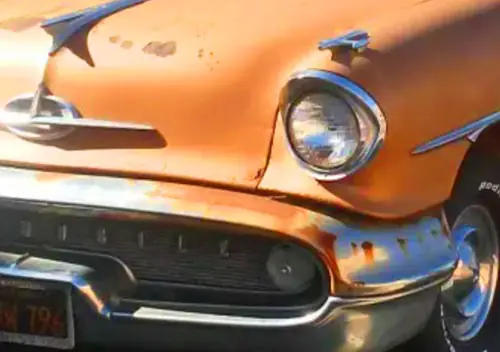
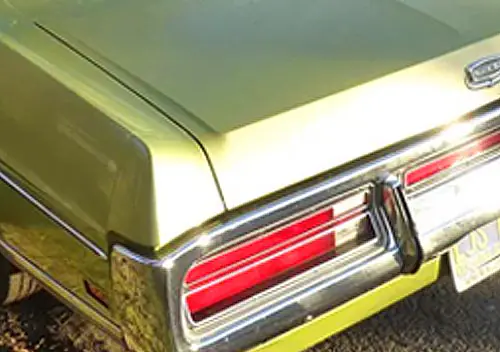


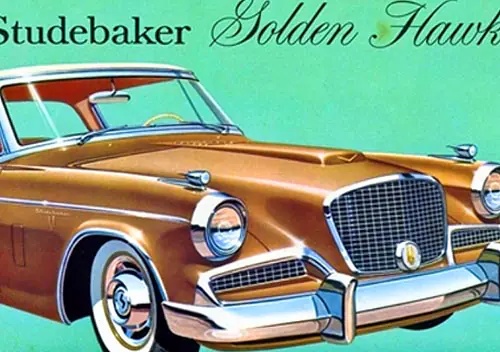
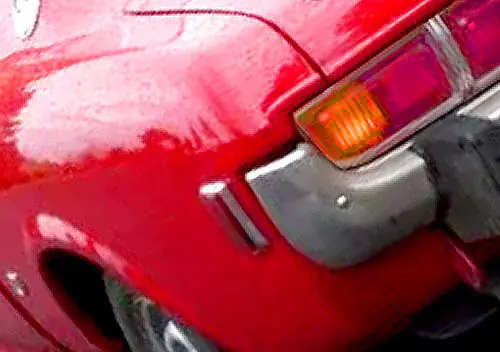

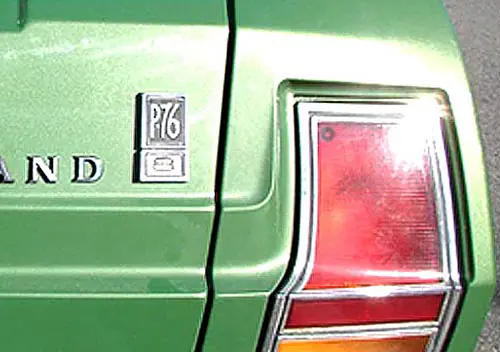
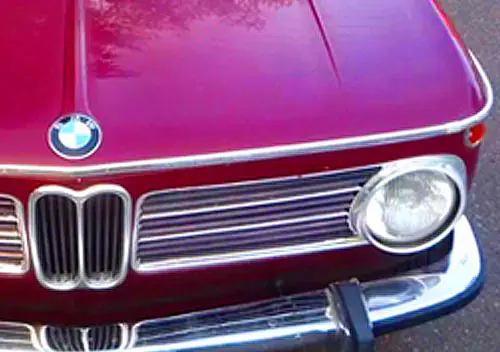
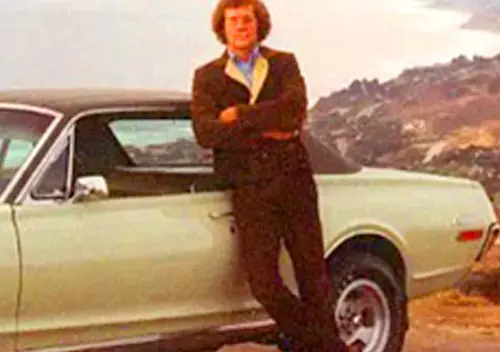


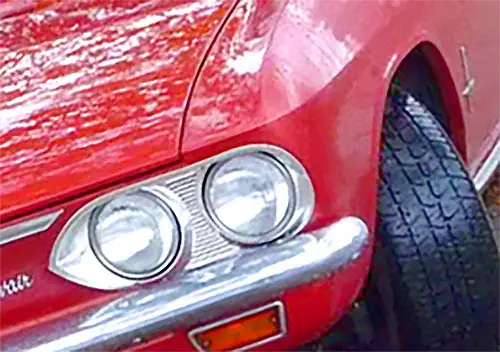






Why are we seeing a 2015 car on CC? Is it because we won’t see these in 2055?
Because “Every Car Has A Story”.
We like to celebrate all cars here at CC. Although the primary focus is usually cars from the ’60s through ’90s, an insightful and well-written article will never be excluded due to the subject vehicle’s age.
I like the rental series.
suzulight, I respectfully disagree.
Every car, indeed, has a story…and Chevrolet’s story…please forgive the bad pun, but it DOES…
…run DEEP.
Arguably deeper than any other US brand.
This is a badge that once rode on one out of every FOUR vehicles sold in the USA. When its corporate parent once sold more than half the new vehicles in the nation.
How many other instances in history has such dominance, earned by four decades of excellence, been squandered by so many bad decisions over such a long period of time, yet lived to see another day?
I think the tone of this post brings in into a CC context.
The GM Deadly Sin series and countless debates over GM’s past mistakes merit this writeup…as an uplifting and hopeful coda.
Thanks William!
If I understand matters correctly, CC contributors are for the most part unpaid and write these great articles as a labor of love. (Though an ex-journalist who was once actually paid to write things, I plan to get around to doing a CC contribution about a certain mystery automaker “real soon now” to help pay for the years of enjoyment this site has now given me.)
If the personal element here potentially adds to “mission creep,” that hardly matters. Not every post can appeal to every reader, and we’re free to click only on what we want to.
(Can’t say I have the slightest interest in the Malibu myself. But, the post is still timely, given that Chevy is about to announce a new one — and the new hybrid version sounds as though it could be quite competitive.)
This is a badge that once rode on one out of every FOUR vehicles sold in the USA. When its corporate parent once sold more than half the new vehicles in the nation.
How many other instances in history has such dominance,
By some accounts, around 1920, half of the cars in service in the world, were Model T Fords. That dominance was gone 10 years later.
Before that, Studebaker had a huge nationwide sales network, thanks to it’s wagon business, when Ford, Ransom Olds and Henry Leland were unknowns, barely getting started.
Really, failure is the norm. GM has survived over 100 years, in an industry where hundreds of others have failed.
The Ford Motor Company will always be older than GM, and, what a shock, still in business
Indeed; look at the great ‘BMC’ Leyland / Rover Group / MG-Rover in the UK which died. Then look at the contrast of this to Toyota where the philosophy to customer and product is completely different.
When depreciation is taken into account, any car is a Curbside Classic the moment it leaves the dealership lot. 🙂
Turns out we’re misinterpreting his comment. He’s questioning whether the Malibu is well-enough built to survive to 2055. It occurred to me later in the day that this might be the case, and he’s confirmed it to me.
It’s a touchy subject, so maybe next time it should be expressed more clearly. 🙂
Thank you, Paul
So will I still be allowed to contribute articles like I am planning on?
Most of them probably won’t last til 2020.
It’s 2020, my 2015 Malibu is still going strong, trouble free, 103,000 miles.
The ‘Great car apart from the tiny, uncomfortable backseat’ criticism reminds me of the Ford Contour, a notable failure. At least the Malibu doesn’t have the added burden of replacing a cheap and big selling model so no surprise it’s faring better.
Still think the Fusion would be my choice in this segment though.
That small back seat is a big deal in a family sedan. It takes it off my list. Chrysler has done the same thing with the 200.
On a recent service venture with my Durango at my nearby CJDR dealer, I tried to step into the back seat of a new Chrysler 200 sedan as it sat on the showroom floor. Admittedly, I’m fairly tall at 6’1″, but that backseat is a bad joke.
The Chrysler 200 looks good but it is a horrible car, and definitely should be avoided at rental counters.
I’m 5’9 and I had trouble not hitting my head when getting in to the FRONT seat. The interior quality is mediocre, visibility is abysmal, the ride is terrible on anything but glass-smooth pavement, and the transmission is constantly hunting gears.
I get that its an improvement over the car it replaced, but that doesn’t justify the positive reviews. It is still not a competitive mid-sizer.
Agreed, the front is cramped as well. Good looker, but not a functional car.
I just had the pleasure to drive a 200 for a day and a half. In part it was a pleasure. My wife fro once liked it from the passenger seat’s perspective. I thought it drove quite well.
I did not bust my head. However, I busted other body parts: left knee and right knee. The light switch is ingeniously placed right there where the right knee will swipe by going in and out of the car. Why is the light switch not recessed? The crash dummies and test drivers should have told them.
Wait, there is more: do you remember the panoramic windscreens of the 60’s? They made knee busters out of the the door openings. This 200 does a formidable job of disguising the knee buster. It is not the door frame, it is the dash!
Maybe, I could have avoided some pain by lowering the seat. But I adjusted the seat the way I like it.
I sat in the rear seat and it worked for me. I am 5’8″, short legs. But the real measure should be ease of putting a kid in the required baby seat. It supposed to be a family car. I don’t have experience with that, though.
Yeah — most modern cars are largely the same in front regardless of size, so if the back seat is cramped, I don’t see the point of buying a car this size rather than either something smaller and cheaper or a crossover that’s easier to wrestle child seats in and out of.
Admittedly, paper dimensions aren’t everything. I found the Camry horribly uncomfortable in back because of the intrusive, badly designed door armrests, which force me into one of two equally unpleasant positions. (That was a pre-facelift car from probably 2011 — I don’t know if they fixed that on the latest iterations, which I haven’t ridden in.) I would happily have traded an inch or two of leg room for somewhere to put my arm.
Paul F, you nailed it. Comment of the day.
A mid-size or large sedan may be my next purchase after a string of mini-vans, SUVs, CUVs, and a full-size pick-up.
When I’m shopping the automotive food chain at the mid-size and large car level, I expect a functional, comfortable rear seat. I plop myself in the front seat, adjust to my 6’1″ height, and then check the back seat. If it doesn’t fit, it doesn’t ship.
The Malibu is off my list without so much as a ’round the block test drive.
The Impala is Chevy’s saving grace as far as larger sedans, and isn’t all that spectacular.
Camry has the most functional rear seat in the business below Mercedes S Series prices. Strangely, others in the business can’t seem to figure out why it sells so well.
Agreed that the Fusion is a compelling offering in this segment.
It’s not just an issue for us tall folks either (I’m a long-legged 6’3″). Try getting a rear-facing child seat in the back of some of these. To me, it’s an inexcusable oversight in a car that’s supposed to be a bread-and-butter family sedan.
My in-laws have a Fusion. Even in base trim with the base 4 I really liked it.
Has the latest Camry fixed the awful rear armrests? On the pre-facelift version, the weird plastic loops over the door armrests made even a few-minute ride in the back of a rental car agonizing. (I seriously wished I’d walked.)
Last Camry back I’ve been in is 2014. I really didn’t notice the arm rests, but I was not in it for an extended time.
A feature of the Camry that makes it extra roomy and funtional for even three people across is the nearly flat floor. Acoord comes close to this, Altima maybe a notch back – maybe a tie with Fusion. After that, cars like the Passat and Impala are fairly comfortable for two, but have a tunnel that could be mistaken for a dedicated rear driver. The Taurus is the worst of all worlds, large on the outside and cramped on the inside.
The last Avalon update reduced the rear seating in that car in the name of style – larger car, but not as spacious feeling as the Camry. The Camry has been the car that seems to be built around people first, style second. I know nothing about the “Bold New Camry” Toyota has been bleating about the past few months – not sure it if is all that new, or bold, if it is the ’15 or 16 model, or if it has also succumbed to style over function.
I see absolutely no reason to stray from the Accord Sport or Camry SE. Both brands have well-served my extended family for 3 decades now. No need to experiment on weak brands….
This was a great write up though. The CC rental series is awesome!
Dave , my thoughts exactly. Maybe a GM as a two day rental vehicle.
But when it comes to long term ownership…,eh no thanks.
GM had better succeed, for as a taxpayer I do not care to become an unwilling guarantor/creditor/shareholder again. Lest we forget.
Countless lesser enterprises have not had this luxury.
A couple things (I sell these)… The 2013 was a one-year only design, and the changes to the front/rear and interior space happened for 2014 and not 2015. All non-turbo Malibus have the start/stop technology, which gives the Malibu the same MPG rating as the 1.8l Sonic (!), although my cousin’s wife says they got 48 on long highway stretches in Texas (!!) The remote start button must be pressed within 5 seconds of hitting the lock button- not just whenever the doors are locked. Also there is no need to plug in a smart phone- all but the base LS Malibu have streaming audio and a touch-screen interface
These truly are under-rated cars. They have a solid feel to them, they are quiet, comfortable and reliable.
This makes much more sense since GM is soon to release an all-new 2016 Malibu. It shows how cutthroat this segment is when GM is willing to make a significant update in 2014. That harkens back to the sixties when brand-new models were released no later than every two years.
With that said, it’s a tough market, with virtually every manufacturer offering a competent entry. With a field like that, the domestics have no choice but to fall back on their same old primary selling point: price. It then boils down to, if you can live with the Chevy’s shortcomings (mainly, the smallish rear seat), it’s not a bad choice due to the savings.
GM vehicles have a well-deserved bad reputation, but they’ve closed the gap considerably with the best from Japan. If I were in the market for this type of car, I’d at least give the Malibu a look.
I am a GM “hater”. GM earned my hate with a leased Astro van in 1997. I promised myself I would never put myself through such agony again. Too many other good options.
An ’86 Cavalier made me avoid other GM’s except those built by Toyota (Geo Prizm). However, I don’t hate them. I find that companies that have fallen hard and are fighting to survive tend to bring strong product as relative bargains to the market. It takes a long time to overcome a bad reputation. That forces them to deliver. Chrysler did that, Ford did that, and now GM.
Funny you mention an ’86 Cavalier. My wife bought a used base 1986 Cavalier in 1988 from a local Chevy dealer. It wasn’t loaded, cloth buckets, AM/FM radio, rear defroster….but that car was truly amazing. I know because when I met her it was her mode of transportation and I wasn’t expecting much from it. But all I can say is that car drove really well, was reliable as heck and served her well to 140,000 miles. Ironically, she was looking at another used Cavalier before she settled on the one she got. It was also a 1986, but it had a few more options than hers did – 2 tone white and red paint, rallye wheels, sunroof….when she went back to look at it again it was sold. And guess who bought it – a good friend of hers from high school! They often joked about the irony of that story. But the funniest thing was that her friend’s Cavalier was a total LEMON. She had problem after problem with that car, and my wife’s was totally trouble-free. So luckily my wife bought the one she did! It goes to show how two identical cars can treat their owners so differently. I guess GM quality was much more sporadic then too in comparison to today.
I preferred the “Plasticky interiors, indifferent assembly quality and an aged design…” of the earlier GM products to the new poorly engineered GM vehicles. You have to design quality into your product, if you don’t you can’t expect to have a quality product. They have seen the last dollar they will ever get from me in 2005.
I agree. To me the peak of GM was the late-90s, particularly the H-Car LeSabre/88/Bonneville and the N-Car Grand Am (possibly W-Car, although I consider the H-Car better). They epitomized true GM virtues – cheap to buy, cheap to run, and (despite their flaws) cheap to fix. Even their lack of style worked in their favor, considering their Cheap Beater role.
As much as people trash that era, GM had some well sorted platforms and powertrains and the considerable advantage of ubiquity. As a company they seemed at their best manufacturing the automotive equivalent of cockroaches.
The peak of the domestic auto industry after ’60s is the ’90s. It was blooming almost like the ’50s again ( only to bloom way too far to make GM and Ford feel so good to discontinue many good selling cars in favor of SUVs ) H-Body and B-Body were the high point ( and B-Body is very durable on salty road, even better than most offerings today ) Headup-display is cool too. https://www.youtube.com/watch?v=2Rds7yW69WM
For the people trashing the ’90s, I think they would only trash other decades more.
I totally agree, especially in the case of GM.
Is a 5 year old Cobalt a better buy in 2015 than a 5 year old Cavalier was in 2000?
Is a 5 year old Malibu a better buy in 2012 than a 5 year old A-Car was in 1997?
Is a 5 year old Impala a better buy in 2010 than a 5 year old Impala was in 2000?
Is a used G6 (any year) in any way better than a comparably used Grand Am?
And, worst of all, are any of the large FWD cars GM replaced the LeSabre with better than the H-Car?
None of GM’s mass market pass cars have really gotten ‘better’ (at least not against any of the cost of ownership metrics where it makes sense to buy GM).
I don’t know whether “how good of a buy is it at 5 years old” is a realistic metric for GM to be aiming for. To be a “good buy”, you need a combination of simple, durable innards and low resale value. By this measure, Mopars were a “good buy” during most of the 70s, but the cars’ low resale values and the fact that they could be seen populating poorer neighborhoods didn’t do much for the sale of new ones.
I have always thought that the holy grail was high resale value due to high popularity on the used market, which comes from long term quality and durability, matched with good looks. An appealing new car mated with well-engineered and built components makes for the best used car, but that used car will be expensive.
You’re seriously cherry-picking years there. By choosing 2012 you purposefully use the unspectacular end-of-generation ’07 Malibu as a comparison instead of the excellent, redesigned 2008 model. The answer to that one is of course “no” but if you moved if forward *just one year* then the answer would change to a resounding YES.
Your Impala question compares cars of two completely different classes and purposes that just happen to share a model name. The correct version of that question would be “Is a 5 year old Impala a better buy in 2010 than a 5 year old *Lumina* was in 2000? And the answer is, again, YES.
And, having spent considerable time in the company of an N-body Alero, I think I’d roll the dice on the G6 unless said Grand Am was quite low mileage, but that’s just me.
The new Malibu does seem to be a competent car in it’s class. But looks is what sells, and this car is kind of the 51 Plymouth of its class – competent but dull and not that attractive.
The scooped-out seat-back trick happens when the manufacturer realizes that they made the thing too small in the back. The Ford Contour was the last time someone needed to resort to this device. Hopefully the Malibu will be a more durable car than the Contour was.
“51 Plymouth of its class – competent but dull and not that attractive.”
Huh? The Plymouth Acclaim was the direct successor to the early 1950s Plymouth! The new Malibu is, I think, a beautiful car, and probably my next car if I ever buy another one.
I’m with Jim. Aside from the taillights, the entire car looks generic…. and I don’t like the taillights. (They are an improvement over the previous generation though.)
Just seeing these on the road and quickly reading road tests in magazines I wasn’t aware of the changes Chevy had made to the 2015 vs the 2013. To be honest, now that I know the car has a shorter wheelbase but is a bit wider….I would be tempted to “cross-shop” the latest model against a nearly new Malibu. Which brings up another point about the new ‘bu….it looks like a mild “freshening” of the old car AND it looks too similar to a Cruse. Going from a Sonic sedan up to an Impala, it looks like all you pay more for is more room.
As for the idea that the 2015 Malibu is at least the equal of it’s competition…..THAT is why sales are slumping. If I had the money, I’d buy a 2015 Accord LX because I can get one with a manual transmission. A Fusion? You can no longer get a manual, but can’t you still get AWD? The Altima? When Nissan switched to the CVT they lost my vote. Camry? Looks like a loaf of bread with “styling touches” added by a drunk wielding a meat cleaver. The Kia Optima outshines it’s corporate “sister” but the whole brand still seems a bit “iffy”.
Chevy, you should have replaced the ECO model with a genuine SS and that includes a few vibrant colors.
BTW, I agree, the wood used in the Malibu interior makes motel furniture look classy in comparison.
“Chevy, you should have replaced the ECO model with a genuine SS and that includes a few vibrant colors.”
They tried that with the previous generation. As I recall, the loaded LTZ with the V6/6 Speed Auto stickered at some near $40K price.
Personally, I’ve never understood these premium option packages on FWD MidSize cars, they never end up making sense.
The prev-generation LTZ may have had a strong V6 but it was not a legitimate performer. A true SS would not necessarily have a fully tricked-out interior with all the fruit; in fact it would make more sense with a “standard” cloth seat interior to keep the cost and weight down. Then give it a turbo 4 with the boost turned up, at least 270 HP (that’s what the Optima SX makes IIRC). Gear it for acceleration. Not a premium option package, but something that will actually out-accelerate and handle better than anything else in the class.
I don’t see too many Fusions on the road in my area, but the ones that are around tend to be Titanium or the Hybrid models, with the nice wheels etc. So it seems like there is a market for “something better than a Camry”.
Thank you for a thorough review on the Malibu William. Although I’ll never be a true fan of this car, you’ve certainly quelled many objections I have had to it. I will say that I actually like the current Malibu’s styling better than the previous generation. I never cared for its front-end design and tail-lights that looked like they were ripped off from a 1990s 5-Series.
The interior of your rental looks quite nice for a Chevy. A major improvement over Chevys I’ve ridden in. The blue ambient lighting is a nice touch! I understand wheelbase decreased over the last Malibu, and naturally rear leg room decreased. That being said, I hate how nearly every automotive review has to complain about rear leg room in any car smaller than a full-size.
Brendan: feel the same way about the 08 Malibu tail lights. That squib of a light in the trunk lid just seems added on, isn’t organic and just plain jarring.
Though I feel the same way about the 15’s trunk cut line being seen in the profile, the slight upward curve of the lower belt line is nice and the tail lights look like a Chevrolet instead of just suggesting imitation Chevrolet flavor or OP’s [Other People’s] design cues.
Never been a fan of the horizontally split grill either. It always looks forced, as if Chevrolet takes a design and tries to adapt it’s corporate face to a completely unrelated theme. The 15 integrates this better than the previous Malibus, though.
The other thing I should comment on is something I’ve been saying for years: Chevy should ditch the gold-colored bow-tie. If they just went with a silver outline of it and hollow center, much like Toyota, Honda, Hyundai, etc. logos, I feel it would make a huge difference in making their cars look better.
The gold (which is really more of a pale amber color) just isn’t attractive and it doesn’t look good contrasting with any paint color.
The gold bowtie logos are probably my favourite part of this car. They’re just a bit too big, like the logos on just about every new car.
I want the blue ones back that I remember on the front of Impalas back in the day.
Agree on the gold bow tie. A few years ago they bulked the bow tie up with some steroids, but it seems now closer to its classic dimensions. Still, the shape still looks like it has been messed with from the old days.
If Chevy really wanted to go back to its roots, the bow tie should be blue. But maybe they don’t because Ford has done such a good re-boot of the blue oval, which had gone dormant for decades until the 80s.
A ’00 – ’05 Impala pulled up behind me at the Costco gas pump last night and I noticed the blue bow tie, and immediately thought of my Dad’s ’68 Impala with its blue bow tie. I appreciated the nostalgia, and wondered if on close inspection it would have the window screen like detail in the translucent blue background.
I’m with Brendan. The gold is a strange detail, harking back to the vintage products of Frigidaire, Admiral and Coldspot.
“harking back to the vintage products of Frigidaire, Admiral and Coldspot”
I will never be able to un-see this now.
Agreed, the pale gold bowtie looks so cheap and cheesy. Every chevy made with one would look better if it were removed or painted a different more neutral color. I don’t like the blue one either(although better than gold)
Taillights on the ’08-12 Malibu always looked to me like the triangles above the outer round sections were meant to be separate amber turn signals but that got scotched late in the planning process. The ones on the ’13 and up remind me of the ’70s-mid 90s Chevy Van taillights.
William, we’re well used to start/stop systems in the UK, and they have indeed improved a great deal since they were first introduced.
They don’t operate under many conditions, such as aircon on, front demist on, engine too cold, ambient temp too low or high, battery charge state etc. I’d say the one on our Audi actually activates only on 20-25 per cent of stops.
There is a “pre-bankruptcy” GM and a “post-bankruptcy” GM.
My in-laws 2009 Pontiac Torrent is aging badly, as if one earth year is two years to the Torrent. It is 6 years old but feels like it is 12 years old – even with less than 100,000 miles on it. It creaks, it groans, it burns oil.
However those who have purchased newer GM vehicles (and there are quite a few among family, friends, and employees) they seem to be better screwed together and more on par with the rest of the industry.
However, those “post GM” aren’t old enough yet to judge their quality.
My moms 2013 chevy traverse has about the same problems 55,000 miles, two years, and squeaks and creaks galore. Of course, it was designed pre-bankruptcy. My dad’s 2014 Malibu (purchased 2013, 75,000 miles) has none of those problems, but it was designed post-bankruptcy.
Your rear view mirror was an auto dimming type (on LTZ). Was the wood trim real? My CTS does not have any wood trim (fake or real).
It’s nice to hear GM quality has improved again after some dark times, and I hope that they will be able to compete with the other cars in this class (I can’t believe this little car is considered mid or even full-size).
For the times we live in, the interior doesn’t look too bad. I’m going to get it for this, but the Cadillac pictures I’ve seen don’t look that different or better.
The design, like so many, looks like a 90/early-mid 2000s car that someone hooked up to a bicycle pump and has inflated. “Lumpy” is an apt description. A ’78 Bonneville looks positively lithe next to this thing.
I could see buying something like this to drive in the snow to preserve my land yachts.
Not sure what Cadillac you are referring too, but pictures don’t really give you any “feel” for the quality of the surfaces.
I have no problem with a review of a new car, it makes for a nice change from all the old stuff (which I do love btw). But it still ain’t gonna make me buy one of these Chevys. I’ve owned cars from the Big Three (plus AMC) and by far I’ve had the best luck with Fords, so that’s the brand I will be sticking with.
Many of my observations mirror yours, a really great car with a lousy reputation for nonexistent problems.
In Summer 2012, my daughter had some warranty work done on her car, the dealer gave her a (then) brand new 2013 Malibu Eco. I was highly interested in seeing the car to try out the stop/start system and see the improvements over the previous generation ‘Bu. I was impressed with the interior, it was a huge step up from the earlier car especially with the blue lights embedded in the dash decoration. The car wasn’t exactly a a road burner, but it did accelerate rather well considering it was hauling around a lot of extra batteries.
I was disappointed in the trunk space, as well as a later Buick Regal with the start/stop system, as the batteries consumed almost 1/3 of the trunk. The ’13 Malibu’s stop/start system was virtually unnoticeable in regular operation, where the later Regal I drove it was noticeable, but not to the point annoyance. I found that really odd, as the Regal was a much quieter and better driving car than the Malibu overall.
I think the whole back seat controversy was a complete non-issue. Two generations back, the “Uglibu” sedan had the same wheelbase, no one seemed to notice or care at that time. It wasn’t until they decided to use the long wheelbase version of Epsilon for the 7th gen Malibu and then go back to the smaller wheelbase for the 8th gen version. Regardless of all that, I’ve been in bigger cars that have poorer space utilization in the back seat than the current Malibu. I guess we needed a scapegoat of some sort to feel better about the bailout?
After my experiences with the Ep2, I would pay real money for one of these to sit in my garage. But my interest has been piqued with the announcement of a 45 MPG 2016 Malibu Eco. I want to see that first…
I agree: the prior taillamps looked like they didn’t belong to that car. These shout “Chevy”. I find the current Malibu and Impala to be spot on in styling–head turners. The Fusion has grown on me, but it won’t age as well. The Chevys have a less jelly bean profile that will last. Compared to the resurrected Malibu, these are works of art. That first model looked like a giant Corolla. I see the value of remote start in freezing climates, but here in Florida people use it to step into a cooled off car…(my friend’s Malibu-Max can start with the air ON) Has this changed? Sounds like a waste of gas and oxygen if millions of people start doing it.
We just traded in our office’s 2009 Malibu for a new car, and I was in charge of most of the legwork. According to our rules, it had to be a domestic branded vehicle, so the quotes we received were for the Malibu, Ford Fusion and Chrysler 200. Based on our test drives and the mountain of literature I read about all three, it was clear to the two of us “car guys” in the office that the Fusion was significantly better than the Malibu or 200. Granted, the Malibu we tested was only a 1LT, so it was relatively basic. It just reminded me too much of our last two Malibus, neither of which really impressed me.
Like you said, the Malibu is a decent offering, but I would argue that it doesn’t stand out in any one way. If I were spending $25,000 for a sedan, why not get an Accord, or maybe a Fusion or a Mazda 6? And a lot of people agree, evidenced by middling sales numbers and GM’s fast-track redesign of the next generation Malibu. But to each their own…buying a Malibu is not a bad decision at all, just not one I would personally consider.
As for the last gen, I’ve probably logged +/- 20,000 miles on the one our office just traded in, so I feel like I can give a fairly honest analysis. When we first got it, it was light years ahead of our 2005 Malibu in terms of styling and personality…but it was evident after a short time that the car was unimpressive in many ways. The turning circle was atrocious, the cowl height was WAY too high (tiny windows), the powertrain was ho-hum (granted we only had the 4 speed auto), the cruise control was worthless, the electronic displays were equivalent to cars from the late 1990s, the interior plastics were hard, and it just wasn’t a high quality vehicle (several minor issues, and we were always having random noises). It just didn’t seem like a well thought out car compared to many of its contemporaries. But I really shouldn’t be too hard on it. It was totally fine–like just about any new car–and worked well as an office car. Clearly the newer models have addressed many of these shortcomings, and surely the next Malibu will be much better.
For the same money, yeah, the Malibu isn’t as good as the Fusion or Accord. But with some big spiffs and/or cash on the hood, the Malibu looks a lot better. Trouble is, Ford usually matches (or betters) whatever rebates and incentives GM comes up with. In that circumstance, preference tips back to the Fusion.
It really is a dog-eat-dog demographic.
I have looked over the Cruze at the auto show several times and come away favorably impressed. “GM had turned out a nice car” I say to my self. Then I look at the owner feedback on Edmund’s and the reliability record in Consumer Reports, and say “nope, same old GM”
I rented one of these last winter in Iowa. It was a nice ride (in the snow), and it felt solid and well put together, and the interior was a pleasant place to be during the polar vortex. And the issue with the rear seat is overblown; yes, it’s not quite as big as the class leader(s), but not every car can be the class leader in that regard. But it’s quite adequate. But I find the styling of these to be rather modest and generic, but that’s objective.
The real issue is how close in various qualities all of these mid-sized sedans have become. If someone wanted a Malibu, I could not come up with any serious objections. But it’s not the car I would pick.
“Driving the new Malibu, it’s kind of hard to fathom how another mid-sizer could be better”
Sure, the current Malibu isn’t a bad car. Very few modern cars could be considered so. However, within the mid-size class, this car isn’t all that great. These two mid-size comparison tests both place the Malibu dead last. As with all cars, many aspects are subjective, so make of these tests what you will.
6 car comparison- Car and Driver, March 2012
6 car comparison- Motor Trend, July 2014
The same argument could be labeled at the Camry which also came in dead last in several older comparison tests. yet that doesn’t stop it being competent enough and a consistent best seller.
My wife’s leasing an updated ’14 Malibu. Like many have said, it’s a decent car, but nothing special. The transmission often seems confused; the power is good, but you need a lot of pedal to really get it going. Gas mileage in the cold is not good. The EPA estimates are the same as my stick shift Focus (26/36), but the Focus consistently gets 5 MPG better in roughly the same driving conditions. Like I said, it’s OK. She’d rather have an Impala, but our frugality precluded it.
As others have noted, the current Malibu is decent, but the previous Malibu was “acclaimed”.
I’m on the road for work often, so I had the chance to sample several of the current Malibu for a week at a time. They were fine, if uninspiring.
I also rented a new Impala for a week–it was an free upgrade because no mid-sizes were available. THAT car was inspiring! I was prepared to dislike the ballyhooed car, partly because I figure it would be and feel big. It is a big car, but it felt more nimble than the current or previous Impala, and light years more fun than the current Taurus. It had amazingly good visibility. The V6 drivetrain was smooth and powerful, and I got about 25 mpg, about 1-2 less than what I get on a work trip in a ‘new’ Malibu. The seats were fantastic. I have to concede, Consumer Reports was correct, a great car!
Now, I must admit, the rental I had was a top-line car that would probably sticker in the high $30s. That is expensive.
But my point is, I understand the current Malibu and Impala are built off the same platform–but the Impala feels totally different, in a good way. I felt rich driving it! The Malibu is just another competent (or good–most of the mid-sizes are now) car.
We’re all here because we love old cars, but even the worst cars built today are really, really good and much better than any car you could get 20-30 years ago in. They are much more fuel efficient and safer, they ride and handle better, they accelerate faster (I laugh every time I see an 8-second 0-60 described as being slow), they have many more creature comforts, and they need almost no maintenance other than oil changes for the first 100,000 miles.
There are a few things I don’t like about the current batch of cars. Automatics tend to want to shift too soon into overdrive, and many of them hunt too much at highway speeds (that’s one reason I chose a standard tranny in my daily driver). All the new features have meant packing on too many pounds (though that trend may finally be reversing). Wheel sizes tend to be too large, adding unnecessary unsprung weight, and tire profiles tend to be too small, which makes every pothole a potential tire or rim eater. Shrunken greenhouses mean unnecessarily poor visibility.
But it’s hard to come up with other gripes for the current batch of excellent motoring options available to us.
I don’t need more than one car, and I can’t justify the expense of a toy for sunny weekends. So i have to choose: Do I buy the secondhand car of my dreams and tinker with it to keep it running, or do I buy something that’s superior in every way except for sex appeal and nostalgia? While I wish I could be responsible for keeping a CC on the road, I’ve chosen the more practical route. My current wheels are a ’13 Focus, and I have no regrets.
Probably not.
After driving a leasing Buick Regal Turbo, I don’t feel the sticker price has good returns. Over the early ’90s Buick, it improves in handling a lot, and the quietness, probably safety too. But the comfort level is less than expected ( I would go for LaCrosse ) and MPG only improves 5 at the cost of 4-cylinder ( slow heat ), riding quality isn’t better neither.
There are simply too many cars even don’t fare as good as the Regal though.
c5karl, wanted to let you know I agree with pretty much everything you said. Even with things much improved, I’m amazed with how picky people sometimes are. It’s almost like we have to find a few things to nitpick about to make it clear that nobody has yet produced the perfect car. Yet, what each of us wants, needs or expects is different for each of us. I remember when people of all sizes would fit into a VW Bug. I never owned one and they never impressed me in any way. Think back to the ChevyII/Novas (and Falcons, Comets, Darts and Valiants). That had nowhere near all the standard features of the average car today but they were all pretty decent for the time.
Excellent visibility (which I consider a safety factor) and comfortable, supportive seats are a couple of my top priorities. Sometimes I hear people who wouldn’t have a 4-cylinder and will only get a 6. For me, it’s rare to be on roads with speed limits above 55MPH, so I avoid the “gas hog” engines and stick with a 4-cylinder as fuel economy is another priority for me. I’m thankful that things have improved and that we still have a number of choices.
> It’s almost like we have to find a few things to nitpick about to make it clear that nobody has yet produced the perfect car.
This is why I’ve stopped reading car reviews. When all cars are excellent, the reviewers are left to obsess over minor flaws, such as the relative quantity of “soft touch” materials in the interior (can we finally ban the phrase “soft touch” from car reviews) or the minor intrusion of engine buzz at wide-open throttle.
This was refreshing to read after all the GM deadly sin and other bashing that goes on with many sites today. GM makes many good vehicles like the Impala and this Malibu but as always cars like the Cimarron and the odd early 1990’s Corsica has to be thrown in when reviewing them. I have driven several of these new style Malibu’s and find them very comfortable long distance or short hop cruisers. Compared to the rental Camry SE 2014.5 I had I much preferred the Chevy rear seat legroom aside. Now I do think the current style Accord and Sonata are better overall values but would certainly not rank the Bu last in a mid size sedan mash up.
Compared to past auto’s I agree there really is no bad choice today. When a base Malibu with a 2.5 4 cylinder can run 0-60 in 7.5 seconds that is quite an achievement when you consider that a 1983-88 Monte Carlo SS in top performance trim needed 7.8 – 8 seconds to do that same run with a 305 V8! The problem I have with many of today’s cars are the lack of interior color, overly plain austere exteriors that are looking more alike than ever and overly gimmicky electronics that really have turned today’s automobile into a rolling electronic cell phone/video game.
“The segment sales leaders, Camry and Accord, are both competitive but other than a slightly sportier feel in the latter and greater rear cabin space in both, you can’t argue they are considerably better.”
Car reviewers have been making similar statements for at least thirty years. However, the Camry and the Accord have been considerably better in reliability, durability, and resale value. That is why they are the sales leaders.
Terrific review. While the Malibu wasn’t on my radar when purchasing last fall (reasons given in the article linked above) it sounds like a solid choice for anyone in the market.
In retrospect I should have had a dash more seriousness in some of my rental car reviews but that’s water under the bridge.
This was well done, but your sarcastic reviews were some of the most entertaining I’ve seen anywhere. Please don’t change!
It’s astonishing how good modern cars are. I can tell I’m younger than a lot of the CC crowd (yeah, I’m friggin’ 30), so I only get to hear secondhand stories of cars that were deliberately released to consumers with cardboard door panels and solid plastic dashboards and headliners.
But here we have a car that journalists keep at the ‘bottom rung’, and that interior is glorious. Just look at that supposedly bottom-rung steering wheel! It’s phenomenal! Never forget that only 10 years ago, a GM came with this abomination: http://i.imgur.com/PEEoJI6.png
What a time to be driving! It’ll be interesting to see all of these soft-touch dashboards and damped switchgear age into their twenties and thirties, though.
And a resounding “meh,” to you, Mr. Malibu. Look at that coal black interior. I don’t think I could live with that for very long. I’m looking at pricing on these and Edmunds claims 19,884. It may not be a BAD car, but am I going to spend $19,884 of my midsize sedan dollars on a car which, although it doesn’t seem to possess any glaring disadvantages, also doesn’t possess any advantages over it’s competition? For my money, I’m paying 8 grand more and getting a Charger- I keep a car long enough that it would be very little extra/month. If I’m stuck with the 20K limit, I would Accord/Camry. Resale value, proven reliability, a more cheerful interior. . . or shop Buick for whatever’s been marked down this month. I might Sonata/Optima for the somewhat engaging styling, or stretch to a Genesis.
Adequate doesn’t really earn my money, Chevy.
There is something very wrong about the upswing of the beltline in the rear door. From that 3/4 rear angle you shot the shape looks bulbous and very heavy.
The frustrating thing is that the previous Malibu looked so neat, trim and fresh. The roofline was beautiful. Part of the appeal of the old car WAS its narrowness, it stood out as something that would feel light on its feet.
I drove a 2007 and was stunned at the solidity and quietness. GM was using some new stray-in insulation material for the engine compartment that really worked. I had the V6 which was plenty fast. I would not be surprised if the new car drives even better from what I’ve been reading about the new Impala which I love.
And that’s the thing. How do you get the predecessor and big brother so right, including not being boring and generic, and then end up with this design? Why jump on the “it has to be wider” bandwagon? Families don’t buy mid-sedans anymore they buy crossovers. Room isn’t an issue after you reach sufficient level.
The Impala is a narrow car for its length and that’s part of the charm. Cars can be too wide, just compare the GM full-sizers before and after 1977.
My guess is that GM looked at the rejection reasons for the old Malibu, saw that size was mentioned, and decided to “fix” that without understanding all of the things gone right on the old car.
Those things are hard to capture in a customer survey but people at the company, with feel for product, can usually pinpoint those and articulate them to others. Or it could be that they thought the old car wasn’t so great and went with the old let’s just do a smaller knock-off of the flagship, that always works.
That’s why you need someone like Bob Lutz who probably championed the previous Malibu to some people who had serious doubts.
GM has almost always been able to market a decent sedan in the last 30 years with a respectable driving experience. I think most people here would agree.
I’m not a GM hater, but I’m no fanboi, either. I’ve never even ridden in a new Malibu so to say something negative about it wouldn’t be appropriate. I rented a Cobalt, and an HHR some years back, and found them pleasant. My last 2 new vehicles have been GM.
BUT, I wouldn’t even consider a new Malibu at this time. From personal experience, I continue to have real doubts about the long term reliability (100K+ miles) of a GM vehicle. I still have a large rebate earned on my original GM card, but it will take far more than price to get me back into a GM vehicle.
Reviewing a current model as a rental car is a good feature. Many of us travel on occasion and have to do so. Keep these coming!
I bought and drive a 2014 Malibu 80 miles round trip everyday. It is a great car and I believe a lot of the bad press was because it is a Chevy. Had they put Honda badges on it, it would do better.
Good point. Reminds me of the Kaiser-Frazer quote “Slap a Buick nameplate on it, and it’ll sell like hotcakes.”
> Had they put Honda badges on it, it would do better.
Maybe, maybe not. I remember Honda updating the Civic and it hit the ground with at thud. Honda scrambled to revise it ASAP. So while a Honda logo on the grille is looked at favorably, the consumers and critics are still paying attention.
True that.
Honda slapped a H badge on the Isuzu Rodeo and called it a Passport and it bombed. They also slapped a Acura badge on the Trooper and it bombed.
The first generation Odyssey was a Honda designed vehicle and it bombed(even though I actually like the first generation due to the conventional rear doors)
Same goes with Toyota and its Xa, Xc, 2nd gen XB, Matrix,
Not everything Honda or Toyota makes is gold
Good point. Although I’m a huge Isuzu fan, the second you sit in a Rodeo or Trooper, you know it’s not a Honda product.
Agreed on the first gen Odyssey! Perfect car for these times even.
And recent Honda and Toyota ‘bombs’ include the Honda hybrids (except Civic) and Toyota Echo…one could argue the Tundra continues to bomb, if only because it hasn’t dominated it’s intended auto phylum…
Paul F.
While Chevy does often make the SS the very top (most expensive) model, my comment was meant to say that Chevy should go back to the 60s blueprint and add a modicum of specialness along with a modest price increase….just to get back to their “cheap performance” roots. Honda has a Sport model of the Accord and it adds about 9-10% to the sticker price.
Like others here, if I could afford it and wanted a Chevy I’d go with a Cruse or Impala before a Malibu.
I see your point but doubt that Chevy Marketing would want to dilute the SS brand that way. They’ve invested quite a bit into making it a premium package.
While they’re finally appealing in their own right as new and late-model cars (which was not something you could ever say about the Corsica, Lumina, or any N-body ever built), I do wonder how they’ll age on a long term, 10+ year scale. I think that has more to do with why GM went bankrupt than anything else. Camrys and Accords feel tight and nice after 10 years & lots of miles, and more importantly don’t have piddly but expensive things fail constantly like water pumps, alternators, stereos, and power windows.
I distinctly remember reading the whole “Wow, GM is finally good now!” hype around 2005-2006 when the new crop of Epsilons and updated W-bodies all came out. 10 years later, these cars are aging fast. Lots of 06+ Impalas, Pontiac G6s, and 04-07 Malibus are reaching beater territory while the 02-06 Camrys and 03-07 Accords generally still look good (although there are some beat up examples of those, too, depending on owners). Sure, the new GMs are aging much better than the Corsica, Lumina, et al – which had peeling paint and piston slap after 5 years. But that’s damning with faint praise.
I know multiple people who own G6s/Impalas as well as those who own mid-2000s Camrys and Accords and it’s the GM cars that are plagued with ‘nickel and dime’ problems past 100k. Steering shaft issues, ignition issues, suspension problems, just about every electronic glitch you can imagine (windows, sound systems, idiot lights).
I do think GM is going in the right direction but there’s a reason the Malibu is not the best selling car in the US, and it has nothing to do with its new car appeal. I don’t think there’s a clear cut “New GM” and “Old GM” like people talk about on car sites – it’s an ongoing process.
I will agree with this…We’ve owned a 2000 Blazer, a 2000 Century, and a 2004 Impala, and while they were all largely reliable (and were all bought used), there were transmission shifting issues (in the Century and Impala), suspension issues (in the Blazer, which had under 100,000 miles when I sold it), electrical issues (non working rear defrost in the Impala at 45,000 miles, which ended up being the fuse box itself, and a radio that wouldn’t shut off when the driver’s door opened). My brother-in-law’s ’98 Century had non-working power windows that I traced back to a tiny dirty ground in the electrical connector in the A-Pillar. It certainly didn’t stop us from buying GMs, but I can see how little nagging issues could certainly affect buyers’ perceptions.
“Camrys and Accords feel tight and nice after 10 years & lots of miles, and more importantly don’t have piddly but expensive things fail constantly like water pumps, alternators, stereos, and power windows.”
Actually Toyota’s 2.4l engine (found in Camry, XB, TC, Rav4, Matrix) seems to eat waterpumps. (a tell tale sign is a pinkish line up the underside of the hood because the pulleys sling the leaking coolant upwards)
As for the Accord. I don’t think I would buy a 10 year old Accord unless it had a warranty on its transmission. In 2005 Honda was still dealing with auto transmission issues which were not fully resolved until 2007. it was worse on the V6 versions. I am disappointed in Honda over that as it took them almost 2 generations to work out the transmission issue. That is 8 years of Accords with the potential transmission issue(98-06) and these are not just transmission failures where you start up your car and go to drive off and the car does not move or that it slips but also failures where you are driving highway speeds and all of a sudden BAM the transmission locks up(like you put it in park).
Honda was sued and grudgingly replaced them or extended warranties on them and then came the news that the replacements were failing as well.
You could actually tell by the 98-02 generation that build quality seemed to suffer on the Accord. It felt cheaply made. I had a 2001 Accord and it felt cheap and the build quality felt below the previous 94-97 generation. in fact in the area i live in they seem to be rapidly disappearing to a point when seeing one makes you stare at it and try to remember when you saw one last. By contrast the roads are thick with 94-97 Accords
My roommate’s 02 Accord is negative enough to bust the myth of “superiority of Japanese cars”. Coming to the durability over longer lifespan, usually larger Buick and Mercury/Lincoln fares better.
Thank you William, Paul and all of the contributors that make this site such a jewel on the web.
I will agree that modern cars have it all over vintage cars in virtually every practical way that matters to daily driving (and payment making) car enthusiasts and consumers. However, IMO, they could truly inspire people’s lust if they could do more to introduce more character and individuality again in cars. I like the marketing for the Fiat 500. So many engineering and reliability issues have been almost overcome in modern cars. Now, let’s see some character and individuality. Frustrating that the future is so often portrayed as homogenous shapes and hues of silver and white. Stimulate people’s senses, while still aiming for competitive production costs. Of course we all have differing opinions, but I really appreciate manufacturers that try harder than matching the competition.
I definitely agree with what you said. It’s not enough to benchmark everyone, be competitive in all areas and leader in a few, and expect the car to do well without some personality. I don’t buy the argument that “it would have done fine if it had an H or T in the grille” because the Ford Fusion, in comparison to the Malibu, is doing great. Ford is a domestic brand too.
Ford just tried harder, in the right areas, and is reaping the rewards.
Nice to read a review without GM bad comments thrown in as though required because it’s GM. I think the reason for the huge emblems on today’s cars is so the cop’s can identify them from a distance. When ever I glance at a NASCAR race (not really a fan), the huge emblems are the only way for me to identify the car. I know they are all built to set dimensions and look the same by design, but with a few exceptions it’s the only way I can tell what make many of the cars on the road are today. I notice more and more lately, watching TV commercials and even shows, you see the emblems removed or taped over. I’m sure it’s legal influence on this policy, but along with so many of the images being blurred out on TV today, (t-shirts, background signs, faces, etc.) this seems to be overkill in general. The Malibu seems to be a decent looking and driving car from the review. Never drove or owned one, so can’t speak from experience. As far as durability goes, time will tell. And what ever era cars are discussed on this site, it’s proven to be a great time waster for me and you can’t beat the price!
One reason why people are so hard on GM is the overwhelming foreign competition is what forced them to get their act together, and start making cars like this. I’m dubious GM would have done it on their own, if they had more of a monopoly like in the distant past.
That’s a stupid reason to be hard on them. I have no doubt in my mind ALL companies would love to do the same thing, there’s little nobility in business. GM just came the closest to being a monopoly, but unlike real monopolies, GM at their peak there was still nearly 50% of open market up for grabs, and the competition was constantly attempting to get the leg up on them with an innovation or new segment to narrow the gap, many times quite successfully. There was a point where GM got noticeably worse than Ford and possibly even Chrysler, and by that point their marketshare was already significantly eroded and dropping and the foreign competition was well established. Really it took GM 20 years from that point to make cars like this, they had plenty of time and opportunity to take a page from the Japanese since the 80s but they never pulled it off, not because of a “people will buy whatever we build” mentality, that was long over(if that ever was true), but because there was just pure incompetence in the corporate structure that created cars like the Corsica.
You’re smarter than to be calling somebody’s opinion stupid. 😉
I didn’t call your opinion stupid, just your reasoning.
J/K Sorry, didn’t mean to sound like a dick. I hate GM for killing Pontiac, which is a much much stupider reason to hate them lol
I couldn’t disagree with you more. When “you” (the corporate “you”) intentionally don’t do the best you can to earn my money, or screw up and don’t work overtime to make it right, I’ll carry that grudge to the grave. I simply won’t reward incompetence or lack thereof.
I still won’t buy Exxon gas. SWBell will never again get my business. NRG keeps begging to come back with their new rates, ones they could have easily been giving me all along but they chose not to. You’re dead to me.
Amica? We’ve been BFFs for 20 years now. They know how to treat their customers, and I’m willing to pay a premium if necessary for the confidence in that relationship.
When the GM bankruptcy was headline news, Time magazine ran a piece about their “fall from grace.”
Their reasoning was all about market share, which is naturally going to change when you go from only three major players serving a market to a dozen or so. While they didn’t emphasize it properly, they also reported that the hard number of cars they were selling in North America was actually a bit higher than it had been during the high market share years, and they were being produced by a far lower number of employees, and were generally of decent quality compared to their peers in 2008. It is not like GM didn’t progress between 1962 and 2008. But, Time spent plenty of time beating them up for mistakes made a quarter century earlier. Completely idiotic policies of the U.S. government took down the U.S. economy, and took down thousands of businesses ranging from corner ice cream shops to major car companies. The Great Recession had more to do with GM’s bankruptcy than the Corvair, aluminum V-8, Vega, Citation, Cimarron, V-8-6-4 and the 5.7 diesel combined – all events from a quarter to a half century earlier!!
GM was quite guilty of some quality lapses, but the most egregious and arrogant were generally small cars that they mistakenly didn’t care about at the time.
The quality collapse of the early ’80’s can also be blamed on the incredible task of changing their diverse fleet to a changed market and the affects of CAFE. Sure, Toyota was also transitioning to front drive and what not, but they didn’t have to figure out what to do with a 121″ wheelbase 425 powered Fleetwood. GM was scrambling, and blew it big time with certain cars, but it is not like you couldn’t find a single decent car in a GM showroom in any year.
I think the large emblems are more about free subliminal advertising, hence the reason they get covered over in commercials. You see enough of them running around on whatever blob they’re attached to and that herd mentality kicks in deeming that car acceptable, safety in numbers. If you’re trying to play catchup to a more popular brand you make the emblem bigger and more noticeable.
And the less psychological reason being cars all look the same and that’s the only way to easily distinguish them. Cars from the mid-50s and prior were the same way.
Some older cars really have small emblems, or no emblems at all.
I hear people referring to my car as Dodge Aspen all the time. The tiny letters above grill definitely don’t help on that
I think the latest crop of midsized cars certainly look ‘more different’ than 15-20 years ago during Peak Jellybean. Styling seems to sell better than it used to.
This Malibu is a little Camry-esque, but I couldn’t imagine confusing it for a Fusion or an Optima.
I’m not sure current automotive styling has actually passed peak jellybean yet. True, I wouldn’t mistake A Malibu for a Fusion or Optima BUT not necessarily the latter two from each other. The Fusion and Optima share virtually identical profiles and general hard points to their bodies, so much so that it wouldn’t be a stretch to say a Mercury version of the Fusion could look like the Optima (the 96 Taurus and Sable have pretty much the same amount of distinction those have from each other), the same could be said for the Malibu and Camry.
To me anyway the distinction between mid-size sedans from the late 90s and the distinction between current mid-size sedans has largely remained about the same ratio – 2 distinct approaches everyone follows and a few stragglers who either predict the next styling cycle or are just plain ugly. In any case the large badging could be a 1-2 punch response in addition to remedying jellybean cookie cutter styling(which I’m not so sure about).
I’ve rented two GM cars in the last 3 weeks. A Chevy Sonic that I was quite impressed by, except for the weak engine. And a Chevy Cruze. Second Cruze I’ve driven, and I can’t get used to the cramped interior.
The most recent Chevrolet we had here in this segment was the Epica, a Daewoo with a Chevy bowtie.
What an epic (speaking of Epica) failure, rebadging low-budget Korean cars and trying to sell them as Chevrolets. Driving alongside Corvettes in TV-commercials. Sure….
Opel and Vauxhall are the one and only Euro-Chevys. By now GM must know. By the way, Opel/Vauxhall’s sales numbers and market share are on the rise again.
We had these too, badged as a Holden Epica. They sold poorly here too, I dare say to cheapskates or people who didn’t test/consider anything else. Fairly unique in having a transversely mounted inline 6cyl.
They were sold in the US as the Suzuki Verona from memory, I’m not sure if they were inflicted on any other brand.
The Malibu is sold here now, although in very small numbers. The car is quite close to the Commodore in overall size and on the couple of times I’ve actually seen one on the road it takes a second glance to distinguish it.
IMO the biggest sin of the 2013 Malibu is that it didn’t look much different than the outgoing model, at least up front.
Interesting and well written review. Great to have the variety of some newer car reviews, it shows how far we’ve come from the more traditional classics. Interesting comments too.
I recently had one of these as a rental as well, but my experience and impressions were a bit different.
The (electric?) power steering on my rental may not have been working right (it had a catchy or notch-like on-center feel) and the transmission seemed to do way, way more shifting than necessary. Generally, though, it seemed like an 80 or at most a 90% car: good enough for 90% of the people 90% of the time. Respectable, but not exceptional or class leading in any way.
There’s nothing terribly wrong with that, other automakers are that way too and are successful. And it’s sort of how GM has done things for about the past 35 years. The problem, though, might be that GM now needs to be better than that. They need to be more than respectable, perhaps even be superior in some ways. Maybe go back and really understand why “Chevy Runs Deep”. Until then, it isn’t clear they’ve learned much- or enough- from all they’ve been through.
The bottom line for me is that while the Malibu is improved, it isn’t good enough to bring me back to GM. They can- and should- do better, and I hope they do.
Many years ago, when I was still in California and much more of a car snob than I am now (thanks to CC!!!), the first FWD Malibu was released. I may be the only one, but the first reaction was how could they return that name to the market, nothing but bad memories of junker cars driving around as far as I was concerned. Now, several generations later, the Malibu is redeeming itself as far as its name goes, but I would not have bought one of the original ones mainly due to the name and its negative connotation. Note that this was CA, home of the import, the domestics did not generally enjoy a favorable reputation.
However, the one thing that still irks me on most all Chevrolets is the Brass (or is is Gold?) Bowtie badge. Brass is not in style and has not been in some time. Further, it really does clash with some of the colors available (Silver, most grays etc.) Really it is a reminder of the “gold packages” of the ’80’s and 90’s. Yes, one of the early FWD Malibu generations had some sort of Wave/Blue logo thing going which was a bit better but not really, and I believe at one time the Cavalier had a Chrome Bowtie outline which was a huge improvement.
I don’t know, I suppose it’s kind of petty of me to dismiss a car (or manufacturer) due to something like this, but that’s my prerogative. I did own a Tahoe and the badge did not bother me on that for some reason but I still would have preferred it not be brass-colored…
No, it’s not petty to dismiss a car for a badge you don’t like. It’s part of the car and you’ll be looking at it frequently as well as having to pay for it. Believe me, Mrs. Jason and I dismissed cars for reasons equally subjective.
Can’t go wrong with the classics.
See, that I like the looks of, what is that, early 70’s? Even if it was just the blue in the center, it’s be better than the brass. Actually those little lines top and bottom remind me of the GM logo “button” thing they did a few years ago.
Why not just the silver/chrome outline? Goes with everything.
I think that logo goes back to the 20s and saw duty maybe into the early 50s, but others may know better.
I prefer this
Ah yes. The crossed flags on this ’61 means the presence of the big block 348.
Not sure about the color scheme, but the emblem goes back to the early days of Chevrolet (about 1915) when it was used on the cover of brochures. However, I don’t see it on the cars. In the 50’s the bow tie was a small bit of a larger emblem on the front end of the cars.
I found some pictures of Chevrolets from 1915 and the emblem does appear on the radiator.
Different autos, I know but I would have happily traded all three of the last rentals I had for that. I like those cars!
I had:
2014 Ford Escape
2014 Hyundai Elantra
2012 Chrysler 200
I had the most fun in the Elantra because it had a grand total of 30 miles on and and the interior still stank. The entertainment system was plug and play. The system in the Ford was that Microsoft setup that’s not so intuitive.
Like the review and like the car. All the complaints are really pretty minor. I think people who buy one of these will get a good value. Chevy seems sort of like Avis in this market segment – “We Try Harder!” – and throw in a few more features than the competition at each price level.
My thought on the bowtie emblem – either blue or just a silver outline would be better.
As to colors – I would love to see some fun colors and maybe some well done tutones but resale on those is likely bad. That is why BMW leases so many silver cars. Fun interior colors would be great too.
Just as a general comment, it matters not to me what is written about, only that it is interesting and informative. The Malibu article was indeed that.
The Chevy “gold” logo brought to mind a time 20 years ago. I was northbound on I-75 at Findlay, Ohio, where I was to get off. Just before my exit, an on ramp is to the right, and vehicles seem to rise right out of the road.
As I arrived there, a black apparition rose from that roadway and came up right behind me. I could not at first identify it — then, as it neared, I could see a small, dark bowtie outlined in blood red. Then I realized — an Impala SS, first I had ever seen.
Of course, I didn’t see it long once the passing lane was open . . . 🙂
“The segment sales leaders, Camry and Accord, are both competitive but other than a slightly sportier feel in the latter and greater rear cabin space in both, you can’t argue they are considerably better.”
Indeed I can. This Malibu/Mailbu/Failbu isn’t a terrible car, but whether the metric is engineering, design, assembly quality, or reliability, it is an inferior one relative to the class leaders. Even the Altima – a subpar Japanese offering overall – offers a better reputation than GM can muster.
GM has had more than three decades to benchmark the Honda Accord, yet the company has consistently missed the mark – formerly by miles, perhaps now by mere yards, but still lacking.
I was a really big fan of the style of the previous generation. Distinctive, attractive, sharp, with clean flanks, a nice tail design (I actually like the tail lamps) and a long enough wheelbase to have room in front and back. And the reviews reflected it – a Malibu that was every bit as good as the competition. A Chevy getting positive reviews compared to the imports? Yep. A huge change compared to the ’97-’03 generation (styled with Toyota blandness) and the ’04 to ’07 generation (distinctive, but not in a good way). They were vehicles worthy of the good reputation of the Malibu name.
So I think the problem here was that expectations were maybe a bit too high for the ’13 model. Is it a bad car? Not in the slightest. But if you look at it compared to the outgoing model, the styling is more current but most would say a little less attractive and a lot less distinctive. There’s less room in the back. The V6 option is gone. The interior may use higher quality materials than the ’08 to ’12 cars but the distinctive two-tone option of the LTZ is gone. So it just seems like you’ve lost something compared to the previous car, especially when the completion is stepping it up (more sensibly sized Accord, excellent new Fusion and 6, much more credible 200.)
Nice write-up though. Very balanced, very descriptive, just what I expect to find here. I really do enjoy the Rental Car Review series, especially given that I never have the need to rent cars so don’t get to experience new models firsthand, and hope to see some more! No worries about them pushing out the actual CC’s but it’s an informative alternative piece.
GM on the other side of the pond, Vauxhall and Opel on the other hand, has a really handsome midsizer:
Opel/Vauxhall Insignia
http://www.opel.com/content/dam/Opel/Europe/master/hq/en/01_Vehicles/01_PassengerCars/Insignia_FAMILY/Insigina_Hatch/03_PhotoGallery/re_design/Opel_Insignia_Hatchback_Exterior_Design_992x425_Opel_Insignia_Bank_Hires_RGB.jpg
Best bit? It also comes in a very handsome stationwagon, as is the usual in Europe.
http://www.opel.com/content/dam/Opel/Europe/master/hq/en/01_Vehicles/01_PassengerCars/Insignia_FAMILY/Insignia_SportsTourer/03_PhotoGallery/re_design/Opel_Insignia_Sports_Tourer_Exterior_View_992x425_inst12_e03_026.jpg
We have that here as the Buick Regal. No wagon though.
What I like about Opel is that it’s the only mainstream brand to offer a true high-performance D-segment family car. Mind you, even as a wagon.
The Opel Insignia has a 325 hp 2.8 liter V6 turbo. AWD, with a 6 speed manual or 6 speed automatic. This engine is not offered in the Buick Regal, correct me if I’m wrong.
Thinking back to the “will it be around in 2055” comment…Why not? The 1975 ‘Bu had shambolic quality compared to a 2015, and I know of two nicely restored examples just in my part of North Texas.
I actually quite like the looks of the current Malibu, and while not as striking as the last-gen these are actually good cars and great buys. Having said that, this is the most competitive car class in North America and the poor Malibu has to compete against the very appealing (and spacious) all new Camry and stellar Accord. The market is now at a point where even Altima, Sonata and arguably even Kia Optima are more trusted choices than the Bowtie. While the ‘Bu is handsome, it isn’t striking, and those looking for style turn to the Fusion and Mazda 6….
The toughest problem for the Malibu is no longer just that many in the market have bad memories of Dad’s disastrous 82 Celebrity, etc etc….At this point I think much of the market has gone well beyond being anti-GM. It is now ingrained, a matter of Chev not even being considered when this demographic goes out to look for a new car. Sort of the way Dad didn’t consider a Renault 18 when he chose the Celebrity.
And the situation is even worse for the new Chrysler 200, which is more rare here in Big D than its distant cousin the new Maserati Ghibli.
Here, it’s a Holden Malibu but it’s a rare sight.
This looks so much better!
Looks like a white lima bean.
I had one of these Malibu’s as a rental when my 2012 Ford Focus was getting stitched back together after a small fender bender. At that point in time, I was actually wanting a mid size car to replace my focus, mostly due to to having 4 different transmission replacements. I am not a fan of GM after being shafted by them a quarter dozen times during the 90s, (good to know Ford is always there to pick up the slack) but when I got the Malibu rental I was pleasantly surprised. The interior wasn’t designed by playskool! It looked like nobody was coming down off a 4 day binge when they styled the outside! It actually drove pretty good as well, the doors were heavy and the car felt firm on the ground, despite the start/stop system. At the end of my trip, I reached around to pick up my work briefcase that I stuck in the backseat and realized it rivaled my focus in terms of backseat legroom, which ultimately killed the whole car for me. Petty, maybe, but I’m not spending 20% more on a midsized car just to have the same interior volume as a compact, and almost twice the overhang to try to fit in a parking space.